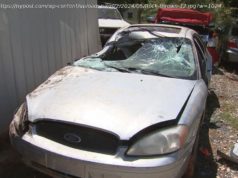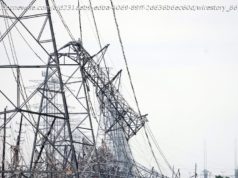By renovating a symbol of the city’s decline, the company hopes to create a magnet for the talent needed to prevail in the next automotive era.
DETROIT — For the past year, Ford Motor has been working on a plan to reinvigorate its operations and jump-start profit growth. Now, as that strategy is just being put into place, the automaker is taking on another big renovation project: the city of Detroit and the hulking remains of its dilapidated train station.
Ford has purchased the Michigan Central Station, the abandoned and graffiti-covered 18-story office tower and train station that looms over the Corktown neighborhood. With its smashed and darkened windows, the station had long stood as the most recognizable symbol of Detroit’s decades of decline.
Ford sees the move as part of the race for supremacy in the next automotive era.
“To me this is about inventing the future,” William C. Ford Jr., the company’s chairman and a great-grandson of the automaker’s founder, said in an interview.
The company expects the renovated station, where the last train departed in 1988, to reopen in about four years. It is intended to be the centerpiece of a new urban campus that will focus on the developing businesses that use self-driving cars, like ride-hailing services and delivery companies.
“It’s so much more than just the restoration of an iconic building,” Mr. Ford said while pointing out features of the station’s crumbling interior, including its ticket windows and a vast, open-air space that he envisions as a glassed-in atrium.
The once-grand depot was built in 1913 and features a soaring grand hall conceived by the architects who created Grand Central Terminal in New York. In the days before air travel, it provided a dramatic welcome to visitors arriving from New York, Chicago, Washington and elsewhere.
As residents and employers fled Detroit over the years, however, train traffic dwindled and then ceased, and the station became a target of vandals, graffiti artists and photographers looking to capture images of urban decay. It has served as the backdrop for dystopian scenes in music videos and Hollywood movies, including “Transformers” and “Batman vs. Superman,” and has been used occasionally as an event space.
Ford has already bought other properties in the area and has moved about 200 employees into a building that was once a pantyhose factory. Mr. Ford said he hoped the Corktown campus would be part of a technology hotbed attracting start-ups, investors and other companies working on autonomous vehicles. To the west, it would include Ford’s main engineering center in Dearborn, and beyond it Ann Arbor, less than an hour away, where the University of Michigan is leading the development of two testing grounds for self-driving vehicles.
Ford thinks the Detroit presence in particular will attract young professionals who now gravitate toward Silicon Valley and other high-tech hubs, and typically steer clear of established companies whose corporate ways they see as sterile and rigid. It’s the same thinking that prompted McDonald’s to move to Chicago from the city’s suburbs, and General Electric to relocate to Boston from Fairfield, Conn.
“Our goal is to have the autonomous vehicle invented and proved out here, and to attract the entrepreneurs and young businesses that will enable that, so we really will be able to create the mobility corridor of the next 50 years,” Mr. Ford said.
Ford is taking on the train station project when it still has plenty of work to do on itself. Just a few years ago, Ford was the healthiest of the three Detroit automakers, but it struggled to map out a clear strategy on electric vehicles, self-driving cars and other new technologies. It was also slow to add trucks and sport-utility vehicles to its model line as Americans were flocking to bigger, roomier vehicles.
Last year, with profits slumping and its stock price lagging, the company replaced its chief executive, Mark Fields, with Jim Hackett, a former head of the office-furniture maker Steelcase.
“I brought Jim in a year ago because I felt we needed to accelerate our pace of decision-making and start placing big bets in certain areas and needed to invent the future,” Mr. Ford said.
Mr. Hackett has sketched out a turnaround plan that calls for billions of dollars in cost cuts and a parade of new types of trucks, S. U. V.s and electric vehicles due to begin arriving in 2019. At the same time, the company plans to drop most passenger cars from its lineup in the United States, including venerable nameplates like the Taurus and the Fusion. Mr. Hackett is counting on these measures to increase Ford’s profits to at least 8 percent of global revenue by 2020, up from 5 percent in 2017.
Analysts have criticized the slow rollout of the turnaround effort. Despite the changes Mr. Hackett has promised, Ford’s stock price has risen only slightly since his arrival.
Ford has also been compared unfavorably with its crosstown rival, General Motors, which has been ringing up richer profits and seems to have been moved more quickly in reshaping its strategy and embracing new opportunities. G. M., for example, recently announced that SoftBank Group of Japan would invest $2.25 billion in its autonomous-vehicle division.
In an interview, Mr. Hackett said Ford had taken time to make sure its strategy was right. “I think when we look back on the time it’s taken to make really good decisions, it’s going to be held in really high regard,” he said.
Both Mr. Ford and Mr. Hackett said the renovation of the train station would not slow Ford’s efforts to increase profitability. The money for the station will come from a sum that Ford set aside in 2016 to overhaul its Dearborn headquarters and dozens of nearby buildings.
The money “was already in all the forward spending models we had,” Mr. Ford said. “We have added no new money to that budget.”
Ford bought the building for an undisclosed price from the family of Manuel J. Moroun, whose holdings include the Ambassador Bridge linking Detroit to Windsor, Ontario.
Mr. Ford said perhaps as many as 2,500 Ford employees would work at the Corktown campus anchored by the train station.
He declined to say how much Ford expected the renovation to cost and acknowledged that the final sum could rise above current estimates. “Whenever you get into a renovation, you don’t know what you don’t know,” he said.
But with economic incentives from the State of Michigan — expected to be detailed at an event with state and city officials at the station on Tuesday — the cost of the renovation “actually looks very favorable,” Mr. Ford said.
As Ford was building a Team Edison to focus on new businesses related to autonomous vehicles, Mr. Ford and company executives concluded that they would need a new location apart from Dearborn to house the group. It had to be an urban location where Generation Y professionals would want to work, and where self-driving cars would need to operate. During the search for such a location, Mr. Ford said, the potential of the train station and the possible impact on Detroit stood out.
He said he recalled going to the train station as a boy for family trips to California, and had a distant family connection to Corktown.






